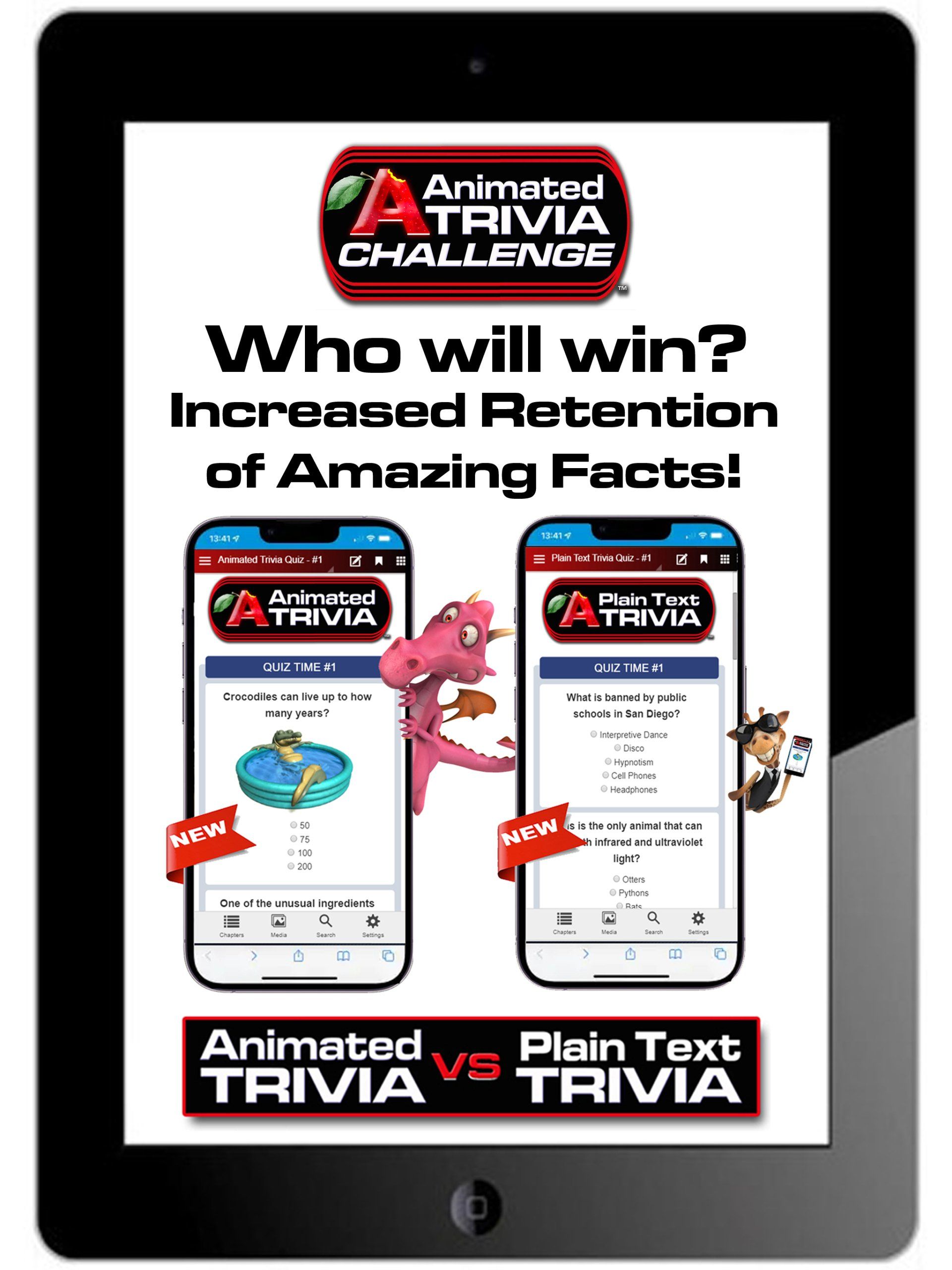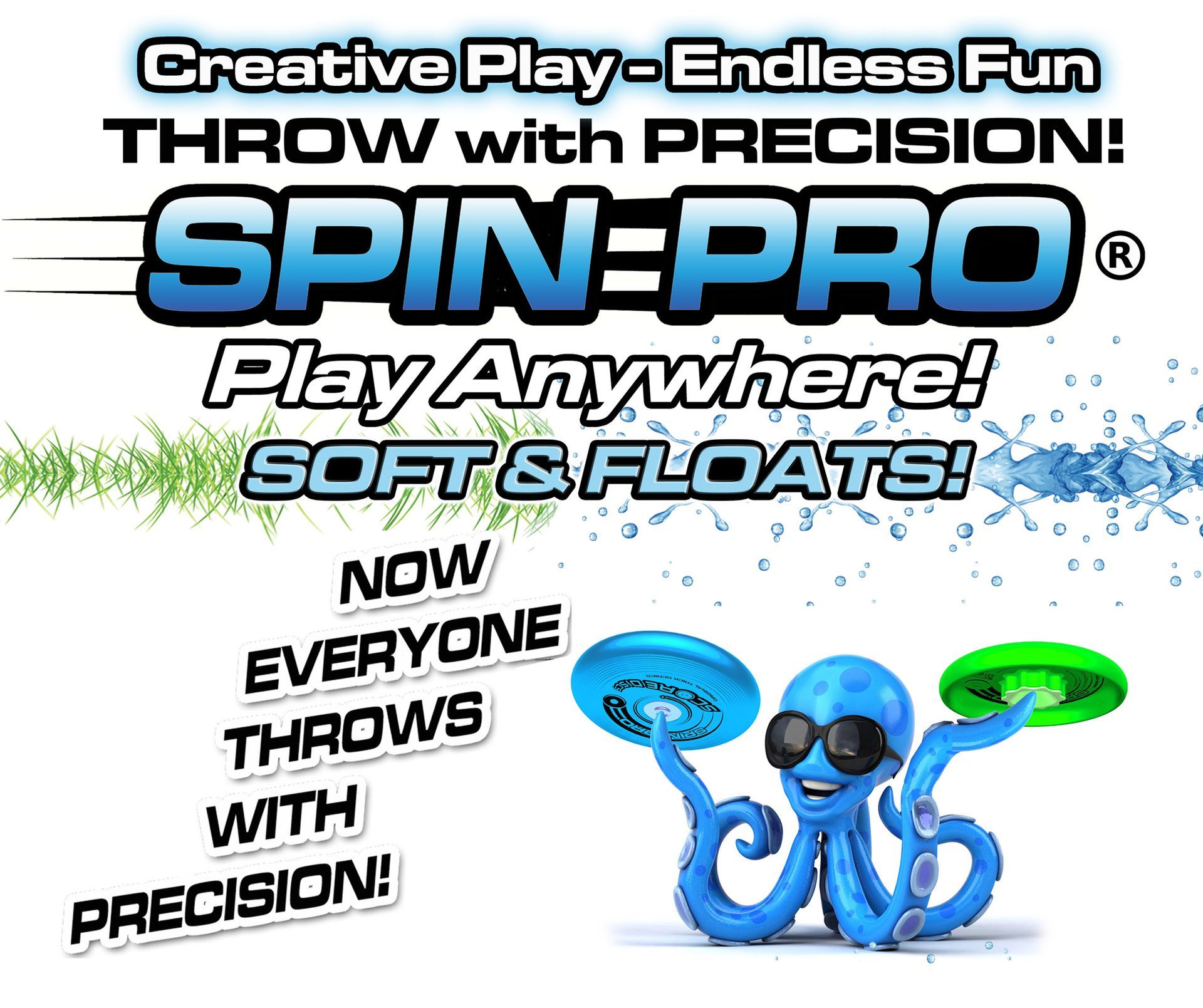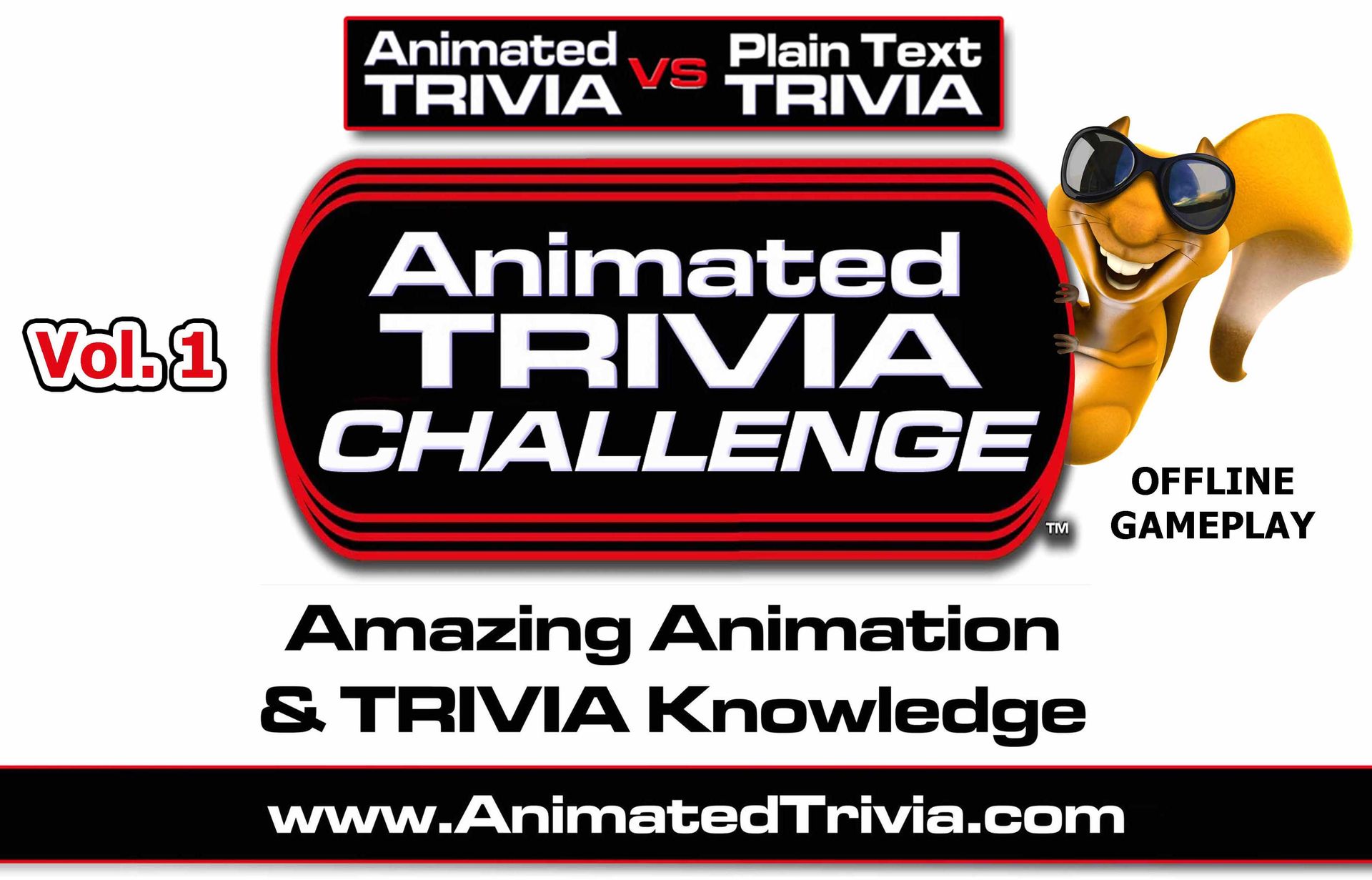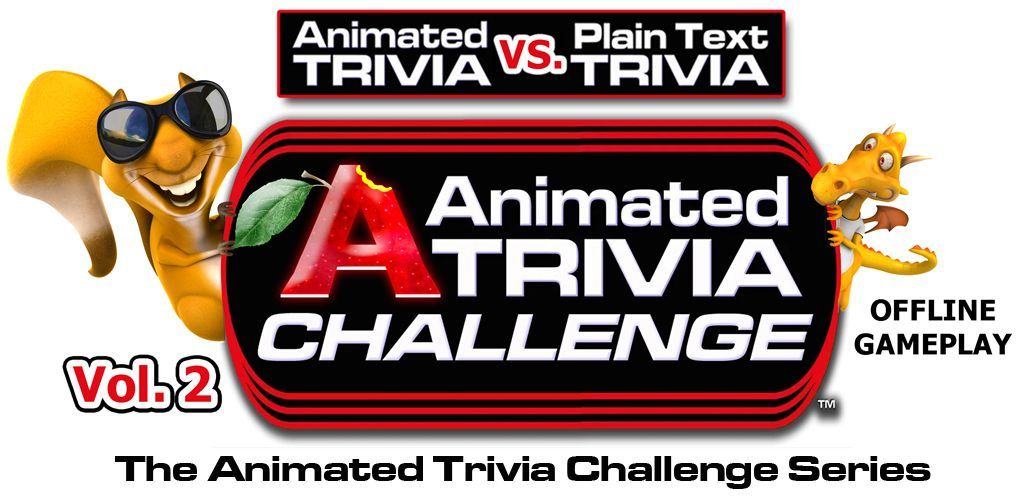Click Buttons Below To Find Us In Your App Store
The Animated Trivia Challenge Series
UPDATE:
Play on PC - Google Play Games February, 2025
*Vol.1 - Android Version /June 2024 Released.
*Volume 2 - June 2024
(Android Vol. 2 Now available)
The new way to experience Trivia!
Take the Challenge!
Vol. 1 & Vol. 2
Improves Recall of Amazing Facts
40 percent of nerve fibers are linked to the retina.
Our eyes can register 36,000 visual messages per hour.
Our eyes can register 36,000 visual messages per hour.
People process images 60,000 times faster than text.
Upgrade Your FUN!
Fun Animation
Our fun quality animated characters will make you smile, think and help you remember. Animation helps people retain/learn the amazing facts much easier than just text. Take the Challenge!
Amazing Facts
World Facts, Food Facts, People Facts, Animal Facts, Weird Facts, History Facts, Sports Facts, Insect Facts, Fish Facts, Science Facts. We cover all Amazing Facts!
Quizzes
ANIMATED TRIVIA Creates Amazing quizzes with Animation and Plain Text Trivia. Take the challenge with the whole family. The animation helps retain amazing facts. Quiz questions rotate and more trivia added so tons of replay value. Enjoy the Quizzes!
Full Download
100% OFFLINE GAMEPLAY!
Perfect for travel, play anywhere, play whenever you want! Optimized full content download. Created for Kids, Adults, Everyone!
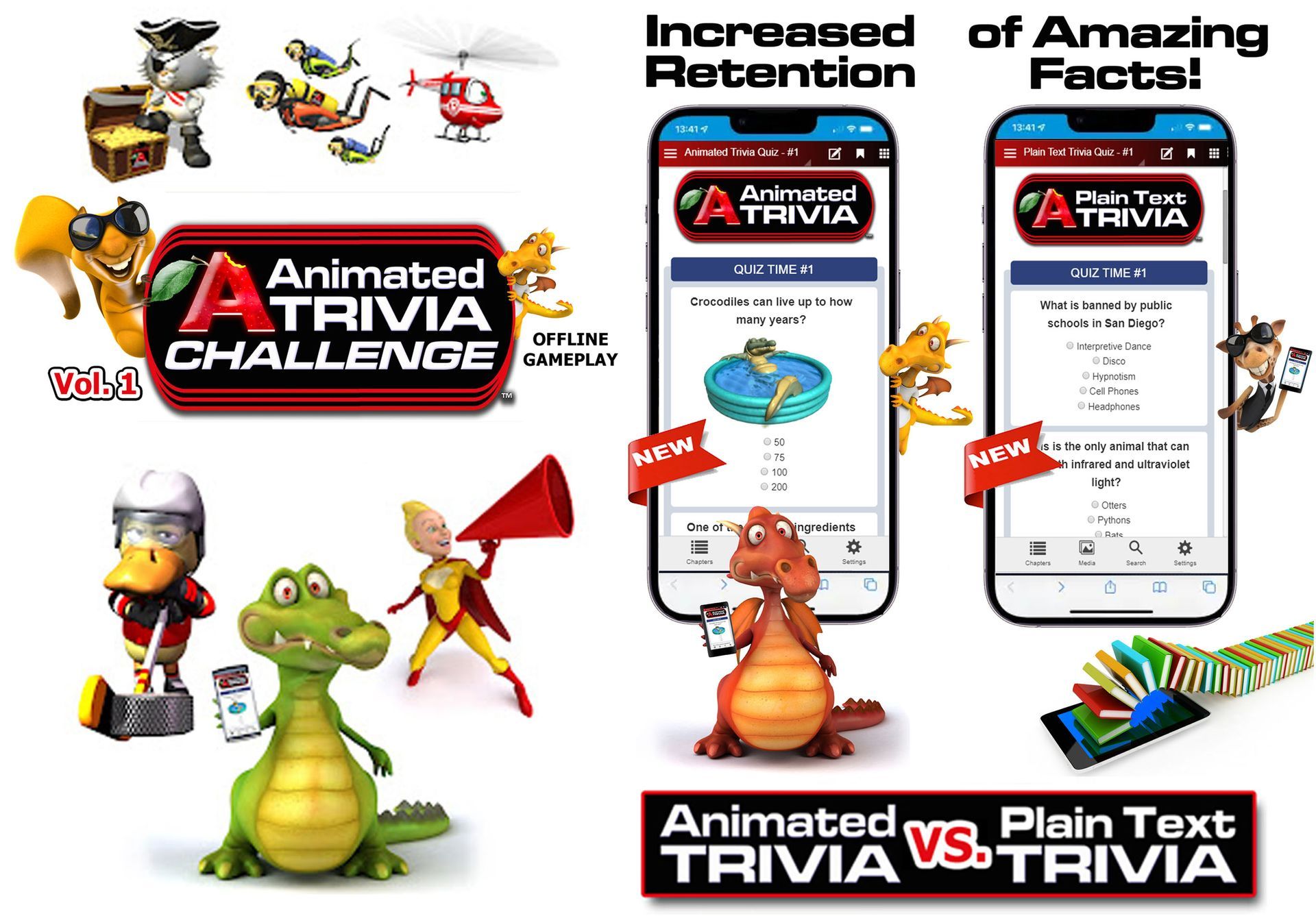
Animated Trivia Challenge Series!

Contact Us - Suggestions
https://www.shiftelearning.com/blog/bid/350326/studies-confirm-the-power-of-visuals-in-elearning
- 90% of information transmitted to the brain is visual.
- Visuals are processed 60,000X faster in the brain than text.
- We can get the sense of a visual scene in less than 1/10 of a second.
- 40 percent of nerve fibers are linked to the retina.
- Our eyes can register 36,000 visual messages per hour.
- Visuals Stick in Long-Term Memory.
Visuals affect learners on a cognitive level and stimulate imagination, therefore, enabling users to process the information faster.
Visuals cause a faster and stronger reaction than words. They help users engage with the content and such emotional reactions influence information retention. This is because the visual memory is encoded in the medial temporal lobe of the brain, the same place where emotions are processed.
The brain is set up in a way that visual stimuli and emotional response is easily linked, and together the two form memories.





